By Tim Kirsininkas, Marketing & Public Engagement Manager
On Sunday, June 3rd, 1973, the 16th Mayor of St. Charles, Clarence “C.V.” Amenoff passed away at the age of 64. Among many roles in his career, Amenoff was a World War II Navy Veteran and established local media mogul, spending time as the publisher of the Elburn Herald and St. Charles Chronicle.
In 1959, Amenoff was elected to the St. Charles City Council, and ten years later, he was elected Mayor. During his term, Amenoff helped to establish the St. Charles Youth Commission, which provides funding and support for youth-centered programs and projects around St. Charles. He also served as one of the first Chairmen of the Tri-City Ambulance Association.
Out of all his career accomplishments, one particular contribution stands out: The Legend of Charlemagne and the creation of the prestigious annual Charlemagne Award.
Always the creative writer, The Legend of Charlemagne is an imaginative short story penned by Amenoff during his term as Mayor, which gave personification and background to the four prideful bronze fox statues on the Main Street bridge.
As the story goes, “Charlemagne” is the father of the four foxes who resided on the banks of the Fox River along with the Fox, Potawatomi, and Sac Native American Tribes. Charlemagne learns of the arrival of new settlers to the area and designates his four sons to remain in the Fox Valley to carry on the spirit of civilization into the new era of St. Charles settlement.
The four bronze foxes were originally a gift of Herbert T. Crane of the Crane Plumbing fortune. The statues were cast in France and placed to complement the balustrades of the Main Street Bridge, originally designed by Lester J. Norris in 1927 and based upon ancient Roman bridges.
As the story reads, the four Foxes symbolize the following:
“I have never given you names, preferring that you be known only as the four sons of Charlemagne, so that there shall always be unity among you for the great tasks ahead. This has been our happy home. It is important that the settlement which arises on the banks of this river will develop a character unique among other communities that will be settled by the white man. I would like you, my four sons, to be the guardians of this growing settlement, to see that it does become a great community in which men can live, can work, can be educated, can worship and can play.”
“You, my firstborn, are to be the guardian of the civic, the business, the industrial life of this community.” “Education will become important in the life of this growing community.
And you, my second son, are to be the guardian of this educational and cultural expression.”
“Soon after this community has been settled, men will band together to worship, and you, my third son, are to be entrusted with the guardianship of this religious expression.”
“Amid this beautiful setting, it is only natural that recreation will flourish, and you, my last-born, shall be the guardian of this natural recreation expression of man living in these surroundings.”
“As for me, I shall now leave you to join my Indian friends.” Finishing his talk, Charlemagne then bade farewell to his four sons and walked out of the den into the night and westward.
These four sons of Charlemagne are now represented on the Main Street Bridge, monumental guardians of this community. Today, St. Charles is truly a great community, the Pride of the Fox, located in the Beauty Spot of the Fox River Valley. It is a community where men can live, can work, can be educated, can worship and can play. The guardianship of his four sons is now testamentary to the will of Charlemagne.
The short story provided the basis of “The Order of Charlemagne”, which is used to qualify individuals for the annual Charlemagne Award presented by the Chamber of Commerce every year to a resident or business owner who best personifies commitment and service to the city of St. Charles. The award was established by Amenoff and first presented in 1967.
The four foxes are also said to reflect the four-pronged mission statement of the City of St. Charles, which is “Heritage. Community. Service. Opportunity.”
Amenoff’s words continue to live on to this day on a plaque on the Main Street Bridge and on the wall of the foyer of the St. Charles History Museum. They serve as the perfect reminder of the things that make St. Charles the tightly-knit community it is today. The bronze sons of Charlemagne continue their ever-vigilant watch over the Fox River valley, along with their counterpart “Ekwabet”, just north of them on the river, paying tribute to the lengthy history and humble beginnings of settlement in the valley.
The City of St. Charles has has indeed lost an outstanding citizen. He loved his community. This love was expressed in numerous ways during his many years with the St. Charles Chronicle and in community service including ten years as Alderman and his last four years as Mayor.
Mr. Amenoff was a hard-working, resourceful and conscientious public servant. These talents plus his keen wit are but a few of the memories we now cherish. Deeply missed will be his intention to serve in an advisory capacity to the new council and to me as Mayor.
His untimely death is an immeasurable loss to both the City and the St. Charles Chronicle. I know that the entire community, the City officials and employees share in my expression of sorrow.
-17th Mayor of St. Charles Edward A Spriet, St. Charles Chronicle, June 6, 1973
Sources
-The Mayors of St. Charles, Researched and Written by Betty Beckstrom, Updated and Published by the St. Charles Heritage Center
-”Death Takes C.V. Amenoff” St. Charles Chronicle June 6, 1973
-Reflections of St. Charles, Ruth Seen Pearson, Edited and Annotated by Stephen Gibson




